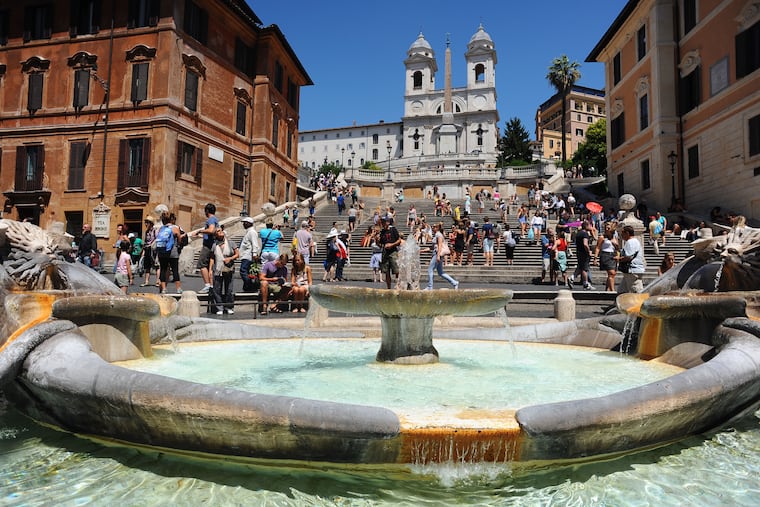Sitting on Rome’s famous Spanish Steps can now cost you a serious fine
Police in the Italian capital have begun to enforce a new rule intended to curb unwanted tourist behavior, from jumping into fountains to walking around the city shirtless.

Police in the Italian capital have begun to enforce a new ban that allows fines to those who soil, deface, or damage Rome’s historic, artistic, and monumental sites.
The rule serves as an attempt to curb unwanted tourist behavior, from jumping into fountains to walking around the city shirtless.
It also extends to sitting or lying on the Spanish Steps, a historic monument and 18th-century UNESCO-protected attraction. Those in violation of the ordinance will be subject to fines from 250 to 400 euros (about $275 to $450).
People who attempt to take a seat are signaled with whistles, and asked to move from the site.
The regulation has been in the works long before this recent implementation.
"It took years for the law to be effective," says Simone Amorico, CEO of Access Italy, a private tour operator. "The mayor [Gianni] Alemanno was the first one who had the idea. Then other mayors agreed with it. But it only came into law [recently].”
It’s not the first time Roman authorities have tried taking legal action against tourists. In 2012, the city issued a municipal ordinance to ban eating and drinking in historic or culturally significant areas of Rome, with fines up to $650. In 2017, Rome put a temporary ban against eating and drinking near approximately 40 of the city’s fountains.
Some tourists may not realize that the public structures are considered priceless works of art, rather than a spot to eat gelato.
"You need to set rules to reduce the risk of people being disrespectful to the city of Rome. So many things are so old and so ancient," says Amorico. "Walking in Rome is like walking in a museum. Things go back 2,000 years old. You can walk from one part of the city to the other and pass the most important monuments and venues there are in history."
Ordinances directed against tourists are being passed outside of Rome as well. In Venice, German tourists were fined 950 euros for making coffee on the 400-year-old Rialto Bridge.
By the way, picnicking on the Spanish Steps is a distinctly touristy thing to do, not an Italian tradition.
"Italians don’t do that," says Amorico. "I’ve never hung out at the Spanish Steps. My friends have never hung out at the Spanish Steps. We really respect our city. We don’t stand on any ancient walls or put locks on any of the bridges."
To do as the Romans do, Amorico recommends going to Villa Borghese or Villa Pamphili to hang out. He says both public parks are much better suited to picnics than the Spanish Steps.